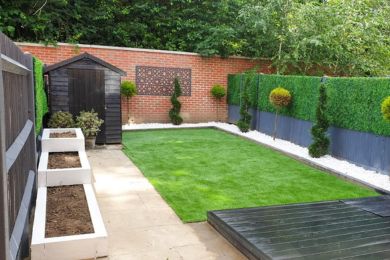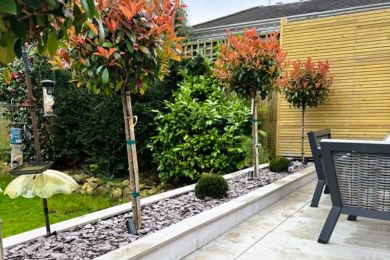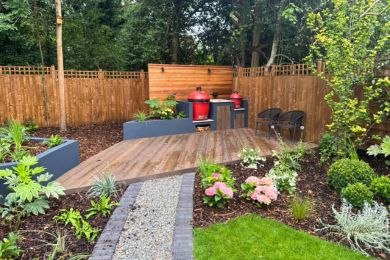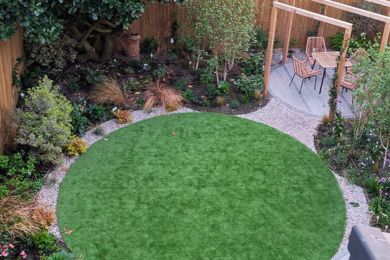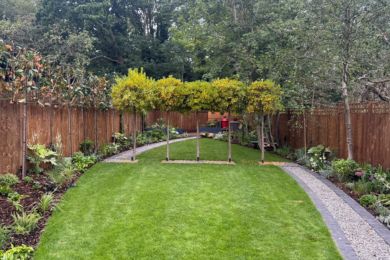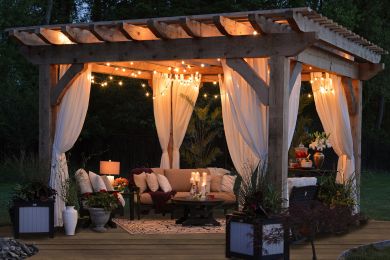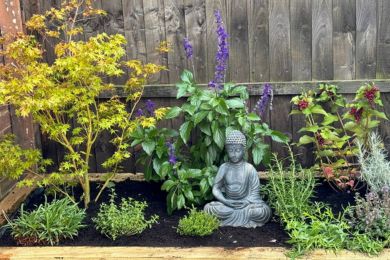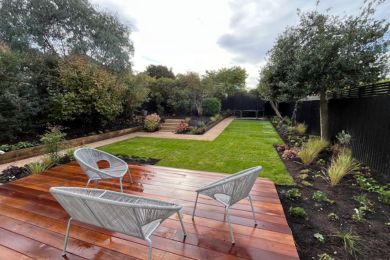Top Pollinator-Friendly Plants For Your Garden This Season
There are many signs of climate change that we can no longer ignore, and the decline in pollinators is a major concern. You may have noticed a lack of bees, butterflies and hoverflies in your garden throughout the spring and summer compared to the vast numbers only years ago.
These reduced numbers are caused by the increase in urbanisation and lack of green spaces across the country. With fewer plants and greenery, pollinators have nowhere to go, and this can have a knock-on effect for biodiversity. Pollinators are crucial for a healthy environment, as their natural process of spreading pollen helps plants reproduce and keeps our landscapes vibrant and diverse throughout the seasons.
Without pollinators, we can expect to see a continued decrease in green spaces and reduced biodiversity. Luckily, there are ways you can help, as your garden can become a wildlife haven and an integral contributor to environmental health.
By including pollinator-friendly plants in your garden throughout the year, you can provide support to these vital insects and create safe habitats for a range of other creatures. Whether you are interested in environmental conservation or simply want to enjoy a thriving outdoor space, SilvaTree is here to help.
As leading landscapers, we know what works and are recommending the best pollinator-friendly plants to create a thriving, supportive garden this season.
Top Pollinator-Friendly Plants For Wildlife Support
To transform your garden into a wildlife haven and support local biodiversity, you need to include a range of pollinator-friendly plants. These plants and flowers are not only supportive for pollinators and the wider environment, but can also contribute to your garden design with colours, textures and seasonal interest.
Including pollinator-friendly plants in your garden allows you to create a supportive and attractive environment that you can enjoy throughout the year. Some of the best plants for wildlife support include:
Nectar-Rich Flowers To Plant All Year Round
Nectar is a sugary liquid produced by many flowers that provides essential energy to pollinators. This liquid is high in carbohydrates, which provides pollinators like bees and butterflies with the high levels of energy needed for flying, foraging and maintaining body warmth.
Planting these kinds of flowers across your garden is a great way to support pollinators throughout their journey and allow them to continue their essential work. By including flowers that bloom at different points in the season, you can provide prolonged support to these insects and ensure your garden remains a wildlife haven throughout the year.
Some of the best pollinator-friendly flowers include:
- Coneflower (Echinacea): With their large, daisy-like blooms, Coneflowers are a staple of any summer garden and can be incredibly supportive to pollinators. The long blooming season provides lasting energy to bees and butterflies, as well as offering prolonged visual appeal in your garden.
- Buddleia (Butterfly Bush): As the name suggests, this is one of the best pollinator-friendly plants for butterflies throughout the warmer months of the year. These are attractive, cone-shaped flowers in shades of purple that are packed with nectar for lasting energy and support.
- Rudbeckia (Black-eyed Susan): Black-eyed Susans are a popular option in a range of gardens, in particular cottage and traditional garden designs, due to their bright yellow flower heads. These are attractive and bloom late in the summer, offering lasting support to bees, butterflies and hoverflies.
- Cornflower: Famous for its bright blue petals, cornflower can add a pop of colour to flower beds and is very easy to grow. This is a particular favourite for honeybees and bumblebees alike.
- Foxglove: This is another great pollinator-friendly plant for bees, as the tubular flowers suit their long tongues. Foxgloves are biennial flowers that provide blooms in their second year, making them a great long-term installment to your garden.
- Wild Marjoram: This edible herb is a great way to add more depth to your garden, and is incredibly attractive to bees. With its pink and purple flowers, this adds vibrancy to your garden in mid-summer and remains a staple for pollinators in this season.
Spring Blooms For Early Support
Spring is the beginning of the gardening season, and with it come to first signs of life across landscapes. Plants and flowers begin to bloom, and you can begin to see wildlife activity across your garden if you have designed it accordingly.
By planning ahead and planting pollinator-friendly plants in autumn, you can enjoy a vibrant spring garden early in the season. With these pollinator-friendly plants, you can have a vibrant, attractive landscape as well as provide early support to local wildlife:
- Crocus: This is one of the first nectar sources of the year due to the early blooms, making it a great solution for emerging bees and other insects coming out of hibernation. The tall petals add early vibrancy in your outdoor space with their bold shades of purple, yellow and white. They are a great option for borders and flower beds.
- Primrose: These pollinator-friendly plants are both early-flowering and shade-tolerant, making them a great option for a range of outdoor spaces. In the spring, they provide early support to bees and pollinators during this critical time when few other blooms are typically available.
- Lungwort (Pulmonaria): These purple, pink and blue flowers are incredibly attractive and suitable for a range of outdoor spaces, including flower beds, containers, and planters. They are nectar-rich and often open early in spring to support pollinators throughout their reproduction.
Long-Lasting Flowers For Summer Planting
Summer is the best time to get outdoors, and it can be an incredibly active season for humans and pollinators alike. During the summer, the hot temperatures and dry conditions can cause issues with your planting spaces, as it can be difficult to keep flowers healthy as the season progresses.
However, with these hardy and long-lasting blooms, you can maintain the visual appeal of your outdoor space as well as continue supporting pollinators like bees and butterflies for months at a time:
- Lavender: A staple of British gardens, lavender is a hardy perennial that produces lush purple flowers and a soothing aroma. It not only provides multiple forms of appeal to your garden design, but is also very attractive to bees and will continue to provide support to these pollinators throughout the summer and into early autumn.
- Salvia: Similar in colour and form to lavender, salvia is just as supportive to pollinators. It can bloom for months, offering vibrancy in your garden design as well as lasting support to bees and butterflies in all kinds of weather conditions.
Autumn Plants For Late Season Energy Supply
While the spring and summer are the most active times of year for pollinators, support is still needed as the seasons change. Pollinators continue their work until the winter and will need support in terms of pollen and energy supplies to keep going. Pollination this late in the year can keep your garden healthy throughout the winter frost and ensure you have blooms to enjoy come spring next year.
Autumn may be a slower time for your garden, but there are plenty of ways you can continue to support wildlife with late-season pollinator-friendly plants such as:
- Sedum (Stonecrop): A great option for low-maintenance gardens and lasting border appeal, sedum has flat pink flowers that act as landing pads for butterflies and bees during their late foraging season.
- Aster: This is a long-lasting flower that continues to add colour and nectar while many others have faded. With aster in your garden, you can continue to support bees and butterflies with late-season nectar ahead of the dormant winter season.
- Ivy: Ivy flowers are a lifeline for bees in autumn, as they can bloom as late as October. With such a late and long-lasting blooming cycle, these flowers can provide support when few other plants remain and keep bees healthy during the winter months.
Conclusion
Pollinators are essential for our ecosystems and play an integral role in the reproduction of plants and flowers. As their numbers have been decreasing over the past few years, it is now more important than ever to create sustainable and supportive environments where we can.
With pollinator-friendly plants, you can transform your garden into a wildlife haven that provides year-round support to bees, butterflies and hoverflies. Using a combination of native flowers, late bloomers, and nectar-rich plants, you can ensure that your garden is a vibrant, supportive landscape that not only looks good but does good throughout the year.
Providing nectar and pollen sources for these insects allows you to play an active role in environmental conservation and is a great way to do your bit without much effort.
For more advice regarding landscape design and maintenance, consider working with professionals like SilvaTree. We provide comprehensive landscaping and garden design services to bring your dream garden to life and ensure all landscapes are supportive.
Contact Us Today
To learn more about our services or request a quote, please contact us today.
FAQs
What flowers attract the most bees?
Flowers such as lavender, echinacea and foxgloves are highly attractive to bees due to their high nectar content and bloom shape, which is easy for them to feed from.
How can I attract butterflies to my garden?
Nectar-rich flowers like buddleia and verbena are attractive to butterflies, with nettles being a larval food plant that can provide support to caterpillars.
Can I have pollinator-friendly flowers in a low-maintenance garden?
Absolutely! Using hardy perennials like lavender and sedum, alongside techniques such as mulching and smart irrigation, allows you to have a wildlife-friendly garden without excessive maintenance.
